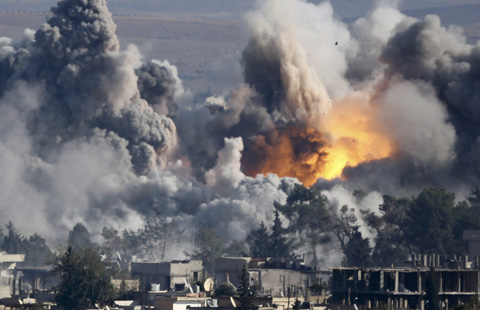ROK's group floats anti-DPRK leaflets
(Xinhua) Updated: 2015-01-20 16:35The DPRK, which did not have an immediate reaction to Monday night's campaign as of Tuesday, has long condemned the practice and demanded a ban from the South Korean side.
In October 2014, the DPRK shot at balloons carrying anti-DPRK leaflets, resulting in the failure of the inter-Korean talks agreed when three top-level DPRK officials made a surprise visit to South Korea to join the closing ceremony of the Incheon Asian Games.
Amid rising tensions, border residents have strongly opposed to the leaflet scattering. On Monday, a liberal ROK's civic group held rally against the United States in front of the US embassy as the New York-based human rights group helped float anti-DPRK leaflets.
Some 20 Americans from the HRF reportedly participated in the Monday dispersion.
The ROK's President Park Geun-hye urged officials on Monday to make efforts to "create conditions" under which the DPRK can respond to Seoul's dialogue offer as Pyongyang has kept mum about the proposal made a month earlier.
In its annual report to President Park, the Unification Ministry unveiled various inter-Korean cooperation projects, including a railway project to restart operations of the 27- kilometer railroad linking Seoul with Pyongyang across the western border to extend the rail into China and as far as Russia.
To materialize such projects, inter-Korean ties should be enhanced, but the repeated leaflet scattering dampened expectations for dialogue in January between the two Koreas.
"Cloud was cast once again over a path to inter-Korean dialogue as a civic group floated leaflets and unveiled the activity," Cheong Seong-chang, a senior analyst at the private Sejong Institute, said by phone.
Cheong said the government's tepid attitude toward the dispersion caused such activity happening again, urging the government to more actively take actions if it has any willingness to resume inter-Korean talks.
 China's big train makers reunite in quest for overseas business
China's big train makers reunite in quest for overseas business
China's big train makers reunite in quest for overseas business





